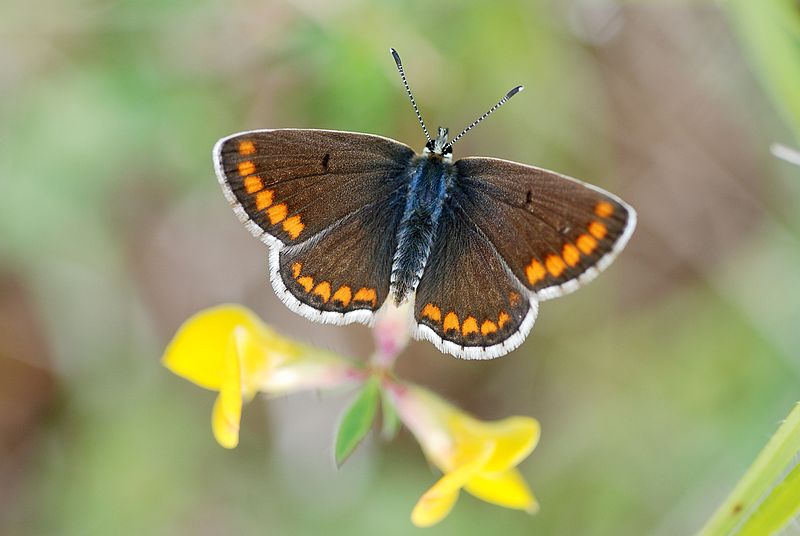Changing climate has caused range shifts in many species, altering the area they are able to survive over. It is not as simple however as species being able to just move to warmer or cooler areas as the climate shifts. Constraints like limits on dispersal, and dependence on other species for food or shelter (particularly plants) can limit a species' ability to shift.
Now research led by Rachel Pateman from the University of York, and publishing in the journal Science has shown that increasingly warm summers in the UK have allowed the northwards expansion of the range of a species of butterfly by allowing it to use a wider range of host plants.
 The brown argus butterfly, Aricia agestis, is at the northernmost boundary of its range in Britain, and is also found on the Continent, in warmer climates. It requires a sufficiently long, warm summer to have enough time for the eggs laid at the start of the summer to hatch into larvae and eat enough before pupating over winter.
The brown argus butterfly, Aricia agestis, is at the northernmost boundary of its range in Britain, and is also found on the Continent, in warmer climates. It requires a sufficiently long, warm summer to have enough time for the eggs laid at the start of the summer to hatch into larvae and eat enough before pupating over winter.
Historically, argus females have laid their eggs primarily on the common rock rose. These plants are generally only found in grassland on south-facing slopes, which are the warmest type of microclimate found in the British Isles. The restriction of the butterflies to using this species is most likely down to this warmer microclimate effect and not down to any innate female preference or due to larvae growing better - because the team tested these exact conditions between rock rose and another plant the butterflies occasionally used, called dovesfoot cranesbill. In fact, it was shown that the larvae actually grow better on the cranesbill plants.
By analysing climate data and observational data of argus butterflies, the team have found that the increased frequency of warm summers over the past 20 years has coincided with an increased use of dove's foot cranesbill by the butterflies. And because cranesbill grows far more widely than does rock rose, the range of the butterflies has expanded, spreading north by nearly 80km in those 20 years - more than twice as fast as would be expected from the global mean.
Another factor that may have allowed the population of argus butterflies to increase is that the shift in plant species has allowed the butterflies to escape from harmful parasitoids - organisms that act like parasites on their hosts, and then ultimately kill them.
So while this is good news for the argus butterfly, it's unclear what the impacts could be on the ecosystems they are now managing to exploit. They might end up outcompeting other species that rely on these cranesbill plants, or transfer diseases or parasitoids to new hosts.
But the important point from this story is that interactions between species don't have to be constraining factors when climate change causes range shifts, but can actually allow species to expand their range.
- Previous Losing Gas in Galaxy Evolution
- Next A new DNA-based memory chip










Comments
Add a comment